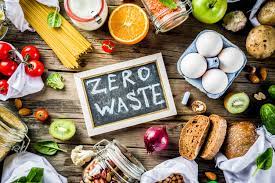Food waste is a global problem. The impact of food waste on our food systems negatively impacts the environment, biodiversity and natural resources, increasing economic and social costs. Reducing food loss and waste is an urgent and important step in the process of building a more sustainable food system.
Food loss and waste has three types of generally quantifiable environmental footprints.
Greenhouse gas emissions (carbon footprint)
Pressure on land resources (land area)
Pressure on water resources (water footprint)
These three footprints can affect biodiversity.
carbon footprint
It is the total amount of greenhouse gases (GHG) emitted during the food life cycle, expressed in CO2 equivalents. This includes all greenhouse gases emitted during production, transportation, processing, distribution and consumption, as well as emissions from waste disposal.
The global carbon footprint of food waste is estimated at 4.4 GtCO2. If food loss and waste were a country, he would be the third largest emitter on the planet after the United States and China.
land footprint
There is no universally applicable method to measure total land area for food production. Some reports estimate a food’s land footprint based on the land area required to produce that food. Land use is of great importance in terms of climate change, biodiversity and ecosystems. Intensive agriculture leads to continued use of synthetic inputs that reduce soil fertility, cause pollution, and ultimately lead to loss of arable land.
In 2007, 1.4 billion hectares of agricultural land were used to produce unconsumed food. This represents almost one-third (28%) of all agricultural land in the world. This represents an area larger than Canada and India combined.
Meat and milk are major sources of land occupation by discarded food. water footprint
Agriculture accounts for he 70% of the world’s freshwater withdrawals. The remaining 30% is used for industrial production and domestic water supply. A food’s water footprint is a measure of all fresh water used in the manufacture and delivery of its products to end-his users, at all stages of the supply he chain.




